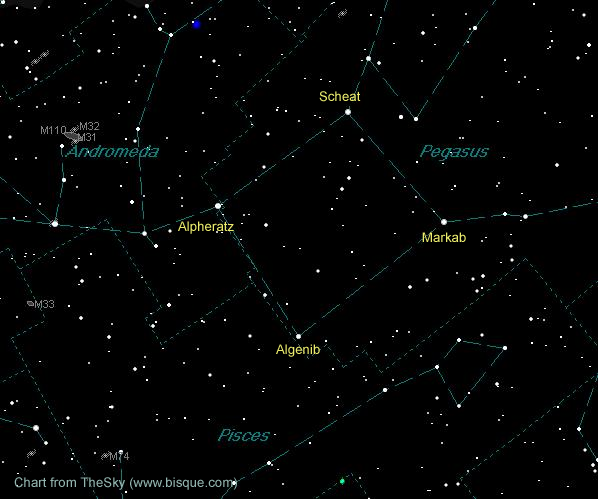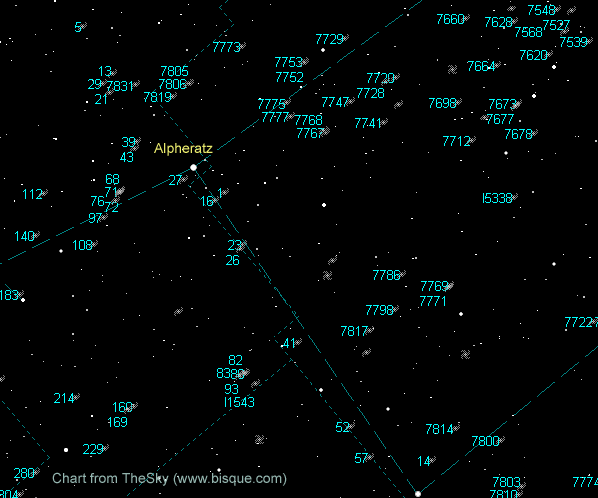Brightest Comet in Human History?
BREAKING NEWS – On the night of September 21, 2012 – Russian astronomers Vitali Nevski and Artyom Novichonok were imaging the night sky with the International Scientific Optical Network (ISON) 40 cm telescope and CCD camera at the Kislovodsk Observatory. After several exposures, they discovered an eighteenth magnitude comet now officially named C/2012 S1 (ISON). If predictions are correct, this little faint fuzzy may be a household name by this time next year. At the end of November 2013, the comet will round the Sun at the slim distance of .012 astronomical units or the Sun’s width. Early estimates of magnitude minus sixteen (-16) and a seventy-degree tail have been tossed around.
But we must exercise caution with these figures since C/2012 S1 is still between Jupiter and Saturn with estimates and observations still fresh. Astronomers believe our interstellar visitor is from the Oort Cloud and has never experienced solar heat, so there would be a lot of fresh material to exposure during its solar flyby. If the great comet of 1680 or Comet Lovejoy that skimmed the solar surface on December 16, 2011, is any indication of a comet surviving an extremely close approach to the Sun, we should be in for a fantastic show. Comet C/2012 S1 could be regarded as the brightest comet in human history. Stay tuned for further developments.
A true advantage of October nights is the fact we can point our scopes skyward by 8 p.m. locally. This is a far cry from the end of June when we observe deep-sky from about 10:15 p.m. As we first gaze straight up, we notice Cygnus the Swan is parked on the meridian or its highest point of its east-west motion. Some forty-five degrees to the left is an unmistakable box of four fairly bright stars. This almost perfect shape is called the Great Square of Pegasus. The suns of the mythological winged horse are listed from magnitude 2.0 to 2.8. Using the star Algenib as home plate of a baseball diamond will help with locating some great looking objects as well as challenges.

As we round first base star Markab, we come across a trio of faint galaxies. In order of brightness and size is NGC 7463 at magnitude 13.2 and 3.0 arc minutes in length. We also have NGC 7465 at magnitude 13.0 and only 1.6 arc minutes long and tiny NGC 7464 at magnitude 14.1 and a minuscule 0.7 arc minutes wide. The trio is about a degree past Markab, a class B9 star located 140 light-years from us, blazing at magnitude 2.6. Moving up to second base Scheat, Looking at the stats on this baseman, we see it’s an ‘M’ class red giant or even supergiant star. Scheat lies 200 light-years from us and radiates most of its light in the invisible infrared.
Moving on a tad more than two degrees past Scheat is NGC 7457. This elongated galaxy possesses a very bright and large nucleus. The galaxy is listed at magnitude 10.4 and measures a decent 4.4 arc minutes across. NGC 7457 lies about 40 million light-years from us. Moving halfway to third base and a little in the infield as if to anticipate a bunt from the batter is Abell 2634. Of the seventeen galaxies associated with this galactic swarm, NGC 7720 is the largest, brightest and just happens to lie in the center. At 335 million light-years away, NGC 7720 is also associated with the strong radio source 3C 346.

Before leaving this area, be sure to visit NGC 7331 located at the very top of Chart No. 2. This galaxy has a lot of fine detail in it. The galaxy is located 48 million which is nothing compared to Stephan’s Quintet located a few degrees south of NGC 7331. These very remote galaxies are in the order of half a billion light-years away.
We are now on Alpheratz playing third base. Although it is considered part of the Great Square Alpheratz is also part of Andromeda. Its two official names are Alpha Andromeda and Delta Pegasi. Either way, you refer to it, Alpheratz is a class B8 subgiant star with a surface temperature of 13,000 Kelvins or more than twice that of the Sun. At a distance of only 97 lights years, Alpheratz has a spectroscopic binary that is so close, it cannot be seen optically. This companion swings around the mother star every 96.7 days rivalling the planet Mercury’s 88 days.
One and a half degrees past Alpheratz are the first two galaxies of the NGC catalogue. NGC 1 and 2 are a very close pair located about 206 million and 304 million light-years respectively. At this great distance, NGC 1 still measures 2.2 X 1.8 arc minutes while NGC 2 is a smaller and fainter, As you run past home plate you might come across UGC 119 but with difficulty. This smudge can be spotted only three-quarters of a degree past the magnitude 2.8 blue hot star named Algenib. As mentioned at the beginning of the article, C/2012 S1 will be a news item a year from now but C/2011 L4 (Panstarrs) might be a great naked-eye target in March of 2013. For now, the comet is at magnitude 13.0 but the predicted magnitude of 0.5 is what the professionals are calling for. Stay tuned for further developments.
Saturn and Mars are now difficult or impossible to observe in the west right after sunset. Jupiter is now the planet of the night as it rises at 10 p.m. local time on the 1st and by 8 p.m. by month’s end. One day later Jupiter is 0.9 degrees from the Moon and undergoes an occultation for those living in the southern hemisphere such as Australia and the South Pacific. The planet Venus is now sinking lower to the eastern horizon and is a mere 0.1 degrees south of Regulus on the morning of the 3rd. From the Sunday morning the 14th and for the next two weeks, look for the zodiacal lights before sunrise.
There will be a weak meteor shower slated for the night of the 20th. The Orionids will produce a weak display of only 20 per hour but at least the moon will interfere. This month’s full Hunter’s Moon will occur on October 29 at 15:49 EDT. The new moon will occur 15th at 8:02 EDT.
Until next month, clear skies everyone.
